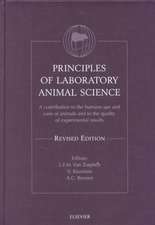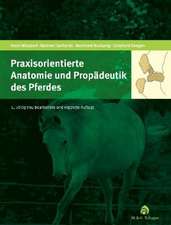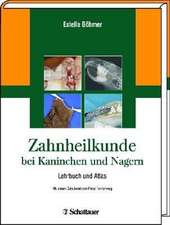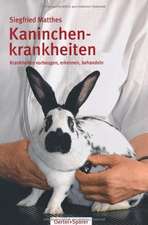Welfare Aspects of Transgenic Animals: Proceedings EC-Workshop of October 30, 1995
Editat de L. F. M. van Zutphen, Miriam van der Meeren Limba Engleză Paperback – 19 mar 1997
Preț: 706.97 lei
Preț vechi: 744.18 lei
-5% Nou
Puncte Express: 1060
Preț estimativ în valută:
135.28€ • 141.62$ • 111.93£
135.28€ • 141.62$ • 111.93£
Carte tipărită la comandă
Livrare economică 05-19 aprilie
Preluare comenzi: 021 569.72.76
Specificații
ISBN-13: 9783540618393
ISBN-10: 3540618392
Pagini: 136
Ilustrații: XII, 120 p. 4 illus.
Dimensiuni: 155 x 235 x 7 mm
Greutate: 0.2 kg
Editura: Springer Berlin, Heidelberg
Colecția Springer
Locul publicării:Berlin, Heidelberg, Germany
ISBN-10: 3540618392
Pagini: 136
Ilustrații: XII, 120 p. 4 illus.
Dimensiuni: 155 x 235 x 7 mm
Greutate: 0.2 kg
Editura: Springer Berlin, Heidelberg
Colecția Springer
Locul publicării:Berlin, Heidelberg, Germany
Public țintă
ResearchDescriere
v Preface The quality of animal models used in biomedical research has increased substantially since the first successful microinjection of foreign DNA frag ments into a mouse zygote in the early 1980s. New well-defined animal models, developed either by micro injection techniques or by homologous recombination in embryonic stem (ES) cells, have become widely available and several classical animal models have now been replaced by these transgenic models. Transgenic animals also fulfill increasingly important roles in other fields, like livestock production or in biopharming. The potential benefits of this technology are overwhelming. It is not surprising that many research groups have rushed to jump on this wagon of scientific progress. However, no matter how important these developments are, they can not relieve us of the moral obligations towards the animals. It is generally recognized that animal use is allowed only if the harmful effects are out weighed by the potential benefits of the experimental results. But what are the harmful effects? What is the impact of trans genesis on the well-being of animals? In order to gain more insight into this aspect of trans genesis the European Commission (DGXII) has funded a 12-month project with the aim of col lecting information on the production and use of transgenic animals in EU Member States and, more specifically, to obtain information as to what extent specific welfare problems may arise and whether or not studies are being performed on the incidence of welfare problems.
Cuprins
Scientific applications of transgenic mouse models.- of defined mutations into the mouse germline.- Growth hormone overproduction in transgenic mice: Phenotypic alterations and deduced animal models.- Prospectives of transgenic animals for the pharmaceutical industry.- Assessing the welfare of transgenic animals.- Production of transgenic animals: Practical problems and welfare aspects.- Use of transgenic animals and welfare implications.- Transgenic animals: the need for ethical dialogue.- Legislation on transgenic animals in Europe.- The Utrecht workshop on welfare aspects of transgenic animals: General discussion.- Annex: list of participants.
Textul de pe ultima copertă
The quality of animal models used in biomedical research has increased substantially since the first successful microinjections of foreign DNA fragments into a mouse zygote in the early 1980s. New well-defined animal models developed either by microinjection techniques or by homologous recombination in embryonic stem (ES) cells, have become widely available and several classical animal models have now been replaced by these transgenic models. Transgenic animals also fulfill increasingly important roles in other fields, like livestock production or in biopharming. In the framework of the European Commission's Biotechnology Programme, a workshop has been organized at Utrecht University (30 October, 1995) with leading experts in the field of animal transgenesis and animal welfare as presenting authors. This book summarizes the papers presented at the workshop.






